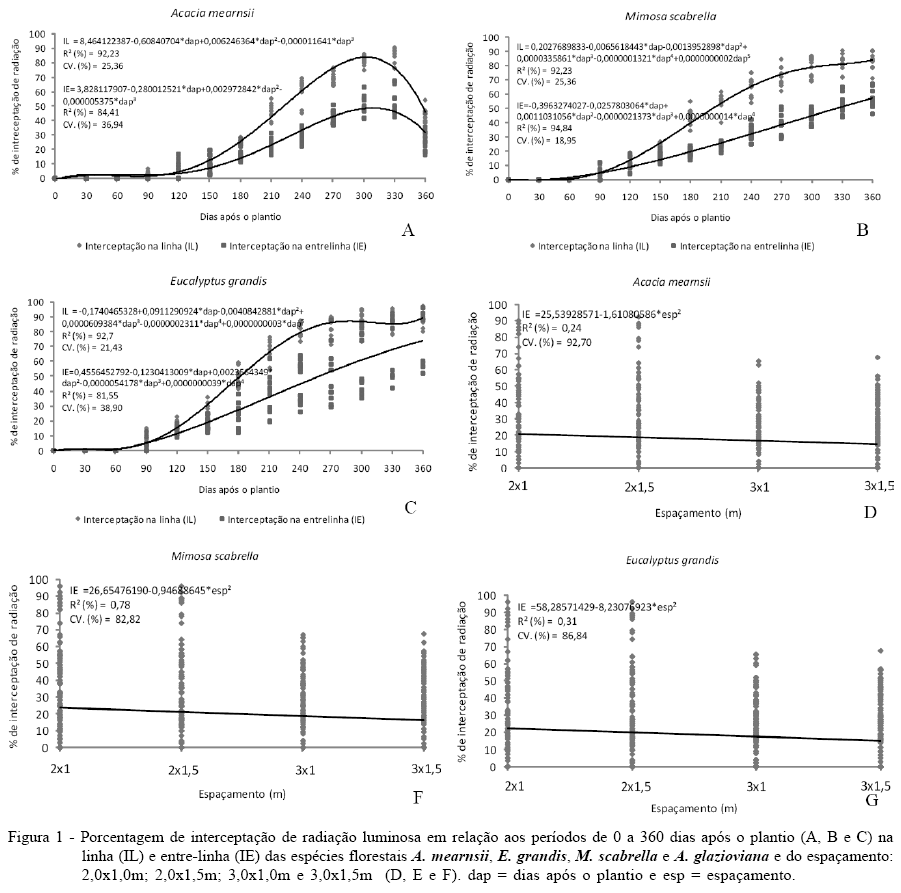The energy of solar radiation absorbed by the plants is a decisive factor of the photosynthesis tax and it can limit the production, the biomass accumulation and the development of the plants. The objective of the research was to evaluate the interception of the luminous radiation and her relationship with the need of handling undesirable plants through crowning and mowing, in the forest species: Acacia mearnsii De Wild, Eucalyptus grandis W. Hill ex Maiden, Mimosa scabrella Benth e Ateleia glazioviana Baill, submitted at levels spacing: 2,0x1,0m; 2,0x1,5m; 3,0x1,0m and 3,0x1,5m. The measurement of the luminous radiation was accomplished monthly during the period from 0 to 360 days after the planting. The points of samplings were among the plants in the line and in the planting among-line. The crowning and mowing were not necessary when the levels of interception of radiation photosynthesis activate were larger than 60%. However, they became necessary starting from the second month after the planting and with a frequency of 60 days for all the species until the first 180 days. The crowning was spared for the species E. grandis starting from the 210 days and for A. mearnsii and M. scabrella after the 240 days after the transplant. Cleared was given only for the species E. grandis in the spacings 2,0x1,0m and 2,0x1,5m starting from the 210 and 240 days after the planting, respectively.
planting density; activity forestry; competition for light





